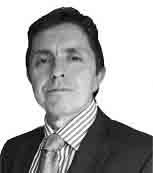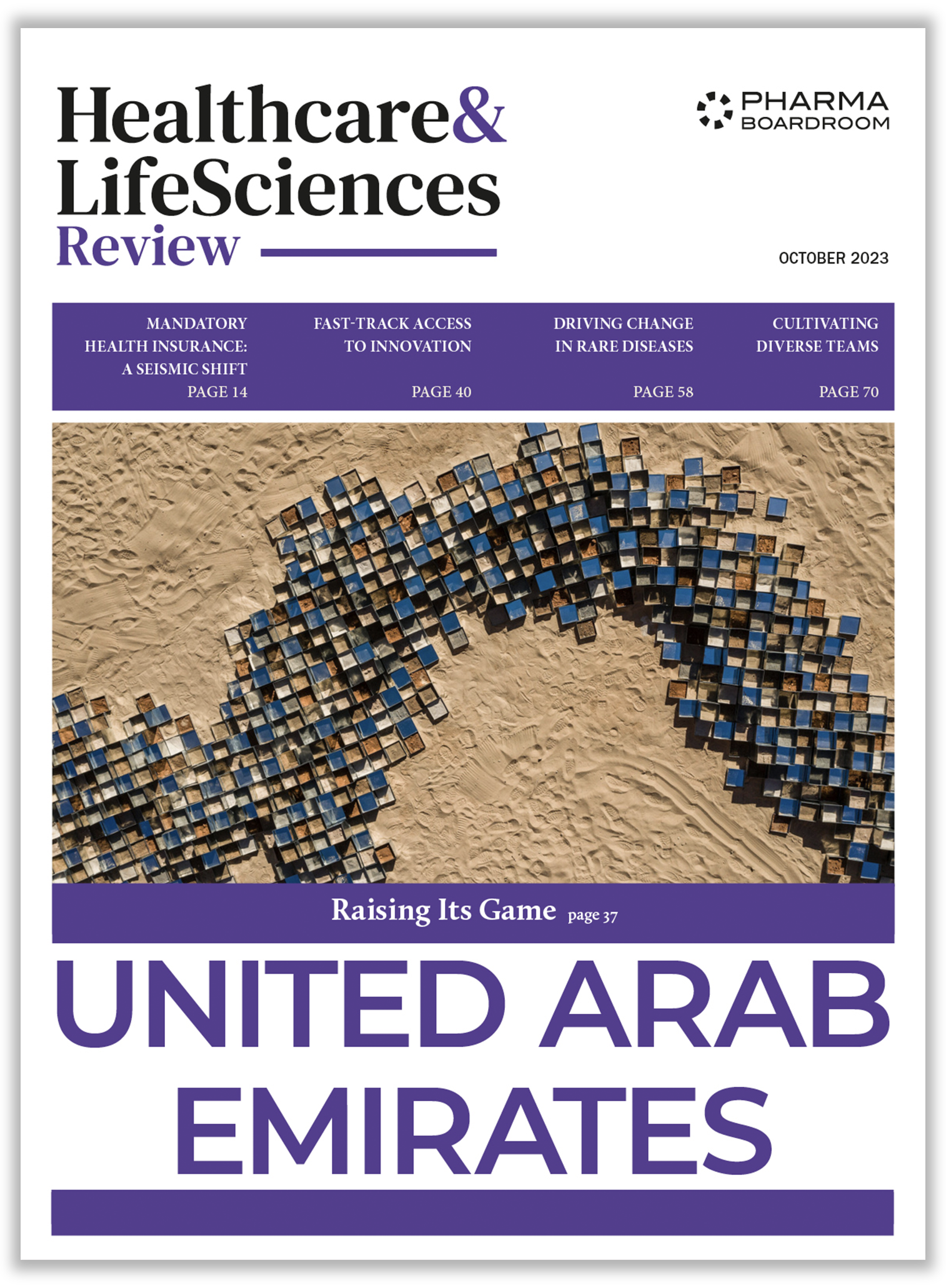Mr. Timmons, when we interviewed your colleague at Takeda Products Ireland, Mr. Kieran Leahy, he mentioned that you have a very interesting professional history. Can you begin by telling us your story?
I went to Japan after completing college in 1985. Japan was far away, sounded exciting, and seemed like a significant challenge. I was a mechanical engineering graduate, and in the 1980s, the Japanese production model was highly regarded for its Lean and its innovative approaches to process management. Although Japan would later face an asset-inflated bubble, when I arrived, the country was absolutely booming—I remember the day when the Nikkei Index reached almost 40,000 Yen. Both the enormous growth, and the later hollowing-out of the economy, was an true eye-opener for me.
Four years into my stay in Japan, I joined IDA Ireland, and received quite a broad remit to search for mobile investment. I quickly focused on the pharmaceutical industry. My first undertaking was the Fujisawa Ireland project to manufacture Prograf in 1990. Ultimately, I worked closely with both Fujisawa and Yamanouchi in their Irish expansions throughout the early 90’s.
In 1994, I met a company called Grelan, which was a small spin-off of Takeda. The company had just in-licensed a product from a partner in France, and decided to manufacture it in Ireland.
In October of 1994, we began discussions; in September of 1995, I was actually asked to return to Ireland and help set up the company personally. Grelan was around 50th in Japan pharma rankings, so it was quite small, but it had aggressive growth ambitions. I moved my family—my wife I had met in Japan and our two children—to Ireland, and got to work.
Within a year of the establishment of the operation, negotiations commenced with Takeda to purchase Grelan’s Irish affiliate. In October of 1997, Takeda bought what was then called Grelan Corporation Ltd in Ireland.
It was a quick set-up for Takeda because in Grelan Corporation, they acquired a ready-made company with a skeleton staff of approximately 40 people that had just been hired and trained. Grelan had also just received its Irish Medicines Board manufacturing license. It was a matter of converting the facility from a capsuling operation to a tableting operation.
We started manufacturing the first Takeda products in 1999.
Beyond securing a manager such as yourself, what do you believe attracted Takeda to Ireland?
In the late ‘90s, Takeda was perhaps more interested in Greenfield operations overseas. However, the company realized that its needs and Grelan’s were very closely aligned, and, if it purchased Grelan’s existing Irish factory, it could benefit from a very quick start-up. It was too good of an opportunity to turn down—especially when Takeda had two blockbusters on its hands, and was gearing up for the next two. Takeda needed a facility to manufacture these new products for overseas markets. The stars simply aligned.
Takeda also did a very detailed review of potential locations, and, at the time, 9 out of the top 10 pharmaceutical manufacturers in the world had invested in Ireland. Some had very, very significant operations here, and some had been present for over 20 years. The country had not yet entered its own boom period, so it was in the lower cost bracket in Europe. At the same time, Ireland had an advanced, English-speaking, pro-business environment.
Ireland also had a very vibrant, liquid market for the recruitment of people, because it was not a country where the occasional pharmaceutical company might set up and grow organically. No—Ireland had the likes of Wyeth, Pfizer, Lilly, and Glaxo coming in to develop state-of-the-art facilities with cutting-edge equipment. Ireland always had the latest technologies. Even outside of pharmaceuticals, IT companies like Intel had arrived on the island by 1990, making their largest global investments.
For Takeda, it seemed a good idea to look strongly at what the competition was doing—and we were sold.
In your years at this company, Takeda has significantly expanded and become decidedly global. How have you watched this company evolve over these last 15 years, and what demands has this evolution put on your production operations?
The evolution of the company after 2000 was quite remarkable. Our two blockbusters of the last decade—Actos and Blopress—achieved great success. In Japan, for instance, Blopress was the largest-selling pharmaceutical product for five or six years in succession. Overseas, the success was staggering as well: Actos, for a number of years, was the largest-selling Type II diabetes product in the world.
On the heels of this success, we re-formulated Lansoprazole, creating the Lansoprazole Fast-Disintegrating Tablet (LFDT). This formulation technology can survive the acidic environment of the stomach until it arrives at its destination area, because of the coating technology that we developed.
LFDT had been developed in Japan at an early stage, but the late-stage development of the tablet was undertaken in Ireland at our facilities. We went from producing bulk tablets and some packaging—largely for the European markets—to manufacturing for the globe, including supplying licensees such as Wyeth. From tableting, we had moved onto significant bulk granulation. This brought tens of millions of Euros investment into this organization.
For ten years, we grew our capabilities significantly. We invested every year. It was a great time! However, in 2008, we could see the maturing of our blockbusters on the horizon. We took a decision, at that point, to go into lean manufacturing mode—anticipating the dip the products would face in 2011 and 2012. Our CEO had been advocating for a long time that the future of Takeda requires significant additional input—successor innovations of all of our legacy products.
After we reached our peak manufacturing point in 2008-2009, we started to adjust our size in Ireland. At the Bray facility, for instance, we reduced overall headcount by approximately 100by 2010 through natural attrition and reassignment. However, we also increased our output using Six Sigma methods. In Bray, we currently have 310 employees and a further 60 at our Grange Castle API site.
We have managed to find replacement products for each of our blockbusters—but currently, we are in building mode. Our marketing colleagues are busy readying the ground, and we are busy manufacturing launch quantities and short runs for multiple markets for these new products. We are still manufacturing our legacy products as well, although some of them face significant generic competition. We find ourselves in an amazing time of highly competitive adaptation.
How did the acquisition of Nycomed affect the positioning and significance of the Irish activities? For example, to what degree have you had to protect your business of late, as this market begins to compete with Nycomed legacy sites in emerging markets such as Russia?
Takeda has been on the acquisition trail for quite a few years. One of our key acquisitions, for instance, was of Syrrx, a San Diego-based company. Here in Ireland, we will be manufacturing on two shifts a product that has emerged from that deal. This product is one of our successor products to Actos. Syrrx, hence, was a very, very significant move for us.
We then acquired an organization called Paradigm, which had research operations in Cambridge and Singapore. Subsequently, the first big integration came—the 8.8Bn USD acquisition of Millennium. Millennium is now ‘Millennium—the Takeda Oncology Company,’ and it encapsulates our entire oncology business unit. Here in Ireland, are also gearing up for manufacture of a product from this oncology unit.
Takeda next bought Nycomed. This was a significant acquisition for us all. Before Nycomed, we had 18,000 people worldwide—after Nycomed, the organization grew by an additional 12,000. Nycomed had a different portfolio profile—the margins on their products were lower than those on Takeda’s innovative drugs. However, the organization came with an absolutely amazing network, from manufacturing to supply chain management.
What does this mean for the future? I fully expect that the acquisition will create a more competitive environment—and this can only help us. If we had to run shy of being competitive, I don’t believe that we would be driving in the right lane in this industry.
At the end of the day, do you expect additional investments in Ireland, based on a model of ‘starting earlier’ and ‘finishing later’ in the production process?
I think that, going forward, Ireland will have to compete for every investment coming down the line.
With that said, we have in this country a critical mass of key product manufacturing. We are supplying products that, directly and through licensees, find their way to 66 countries around the world. For instance, we supply a significant amount of tablets to the U.S. in bulk form. Meanwhile, we have overcome our challenges in formulation production.
Lastly—and this is the latest jewel in our crown—we have started to supply the Japanese market from our Bray facility. This year, we have been able to take back business that we previously outsourced to CMOs, and we have achieved the milestone quality level for the Japanese market—which, on cosmetic criteria, is the most challenging market in the world. We have had to invest heavily to reach this achievement, installing automatic visual inspection systems that you will not find in Europe, and the mindset, skill and dedication that our team has brought to this endeavor is something we are all proud of here at Takeda Ireland.
We have a niche competitive edge, in Ireland, to supply the key worldwide markets of Takeda: the U.S., Europe, and many other markets. I am extremely proud to say that now, we also have the ability to supply what is still Takeda’s largest individual market: Japan.







